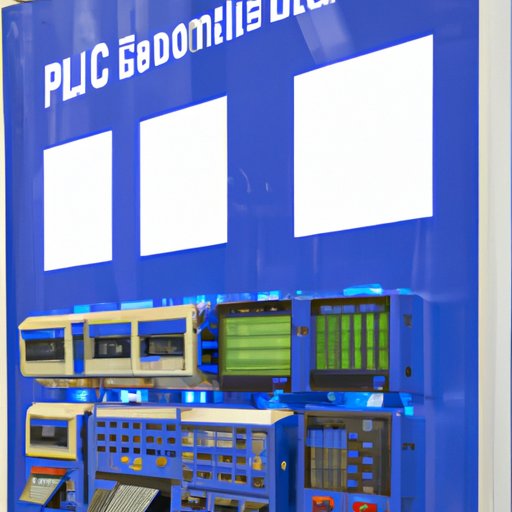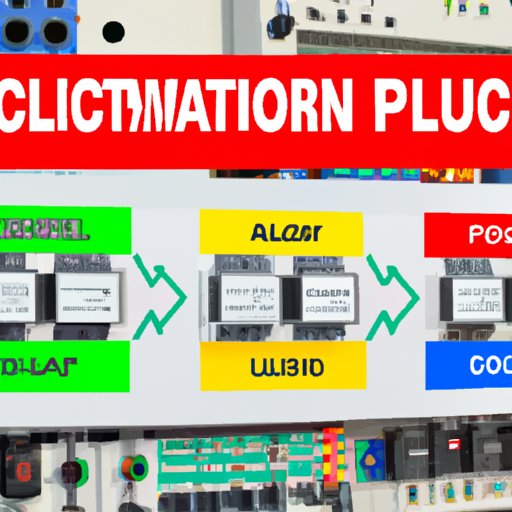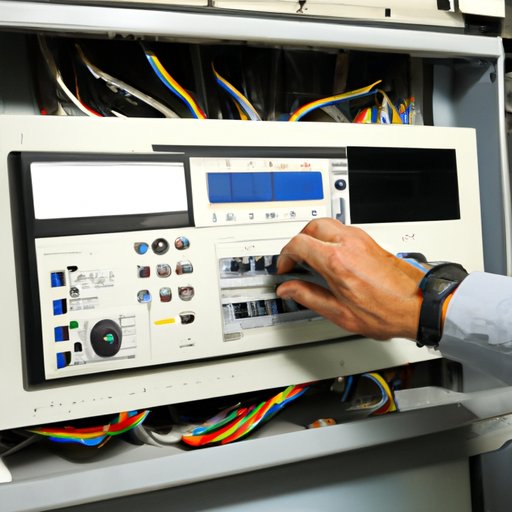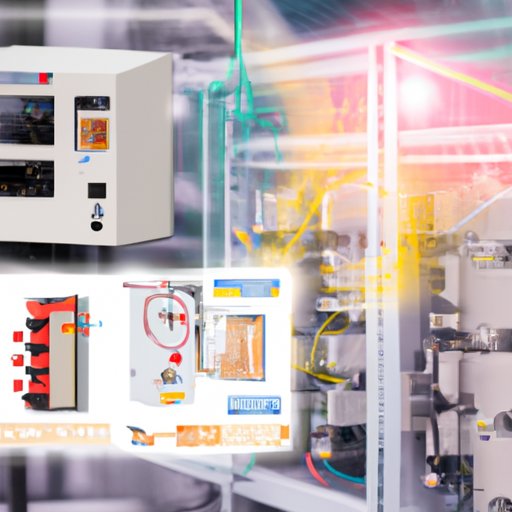Introduction
Programmable logic controllers (PLCs) are electronic devices that are used in industrial automation systems to control machines and processes. They are designed to be highly reliable and robust, and can be programmed to carry out a range of tasks such as monitoring inputs, controlling outputs, and performing calculations. In this article, we will explore what PLCs are, how they are used in industrial automation, the benefits of using them, different types of PLCs available, how to select the right PLC for your project, troubleshooting common issues, and exploring the latest trends in PLC technology.

Benefits of Using PLCs in Industrial Automation
PLCs offer several key advantages when used in industrial automation projects. The first is increased efficiency. By automating processes, PLCs can help reduce production time, improve accuracy, and increase throughput. This can result in significant cost savings over manual processes.
The second benefit is improved safety and reliability. PLCs are designed to be highly reliable and can be programmed to monitor conditions and take corrective action if necessary. This reduces the risk of accidents and ensures that processes are running smoothly.
Finally, PLCs can also help to reduce costs. Automating processes can reduce labour costs and reduce energy consumption. This can help businesses to save money in the long run.
Different Types of PLCs and Their Applications
PLCs come in a variety of sizes and configurations. The most common type is the micro-PLC, which is small and compact and typically used for simple automation tasks. Other types include modular PLCs, which are larger and more powerful and can be used for more complex applications, and distributed control systems, which are networks of PLCs that are used to control large-scale industrial systems.
Each type of PLC has its own set of features and capabilities, and can be used for a variety of applications. Micro-PLCs are often used for basic automation tasks such as monitoring temperatures or controlling motor speed. Modular PLCs are more powerful and can be used for more complex applications such as controlling robotic arms or managing inventory. Finally, distributed control systems are used for large-scale industrial operations such as oil refineries or chemical plants.

How to Select the Right PLC for Your Industrial Automation Project
When selecting a PLC for an industrial automation project, there are several factors to consider. The first is to understand your automation requirements. What tasks do you need to automate? What type of environment will the PLC be operating in? Answering these questions will help you determine the type of PLC you will need.
The next step is to evaluate the available PLC models. There are many different types of PLCs on the market, so it’s important to compare prices and features to find the one that best meets your needs. Finally, it’s important to compare prices and features to ensure you are getting the best value for your money.

Troubleshooting Common Issues with PLCs in Industrial Automation
When working with PLCs in industrial automation, it’s important to be aware of common issues that may arise. The first step is to identify the problem. Is the PLC not responding to commands? Is the output not functioning properly? Once the issue has been identified, the next step is to check the connections and programming to make sure everything is set up correctly.
If the issue persists, the next step is to test the components. This includes checking the power supply, checking for short circuits, and testing the sensors and other components. If the issue still can’t be resolved, it may be necessary to replace the PLC or call in a technician for assistance.
Exploring the Latest Trends in PLC Technology for Industrial Automation
As technology advances, new trends are emerging in the field of industrial automation. One of the most exciting developments is the use of predictive maintenance. Predictive maintenance uses data from sensors and other sources to predict when machinery is likely to fail and takes corrective action before any damage occurs.
Another trend is the increased use of connectivity. PLCs are now being connected to the internet, allowing users to access data remotely and monitor their systems in real time. Finally, the use of artificial intelligence (AI) and machine learning is becoming increasingly popular in industrial automation. AI and machine learning can be used to automate tasks that would otherwise require manual intervention, leading to greater efficiency and cost savings.
Conclusion
In conclusion, PLCs are an essential part of industrial automation. They offer a range of benefits, including increased efficiency, improved safety and reliability, and cost savings. There are a variety of different types of PLCs available, each of which is suitable for different applications. When selecting a PLC for an industrial automation project, it’s important to understand your automation requirements and evaluate available models. Finally, there are a number of exciting trends emerging in the field of PLC technology, such as predictive maintenance, enhanced connectivity, and increased use of AI and machine learning.
(Note: Is this article not meeting your expectations? Do you have knowledge or insights to share? Unlock new opportunities and expand your reach by joining our authors team. Click Registration to join us and share your expertise with our readers.)
